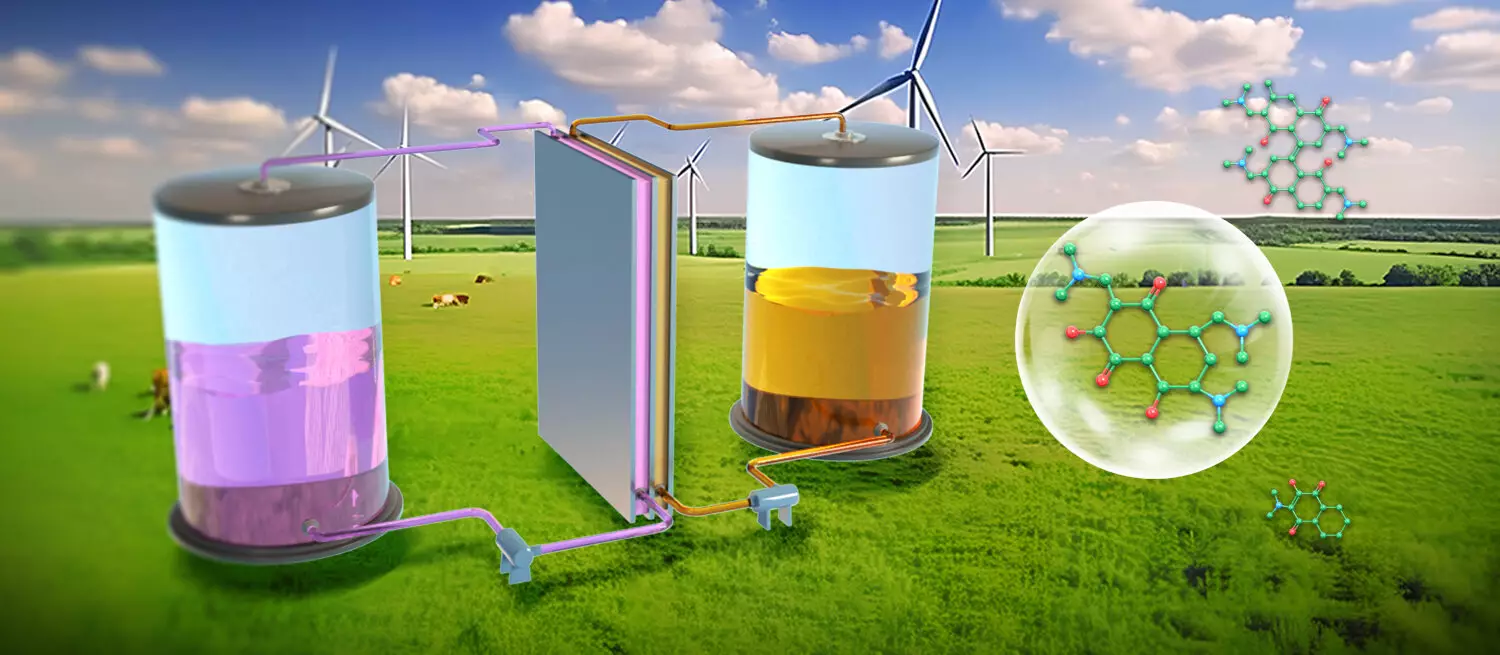Organic redox-active molecules (ORAMs) have emerged as a significant focus in the realm of energy storage, especially regarding aqueous organic flow batteries (AOFBs). These compounds are abundant and diverse, offering an avenue towards more cost-effective and environmentally sustainable energy solutions. However, the real potential of ORAMs hinges on their stability—a critical factor ensuring that they remain active during the charge-discharge cycles without succumbing to side reactions that could compromise their functionality.
Air stability poses a considerable obstacle to the practical application of many existing ORAMs. When exposed to atmospheric conditions, these molecules can degrade, leading to a loss of redox activity. This challenge has historically impeded the suitability of ORAMs for energy storage systems, particularly those designed for continuous or long-term use. Without the protection of inert gas environments, these compounds can suffer from irreversible capacity loss, ultimately diminishing battery lifespan. Developing alternatives that address these air stability issues is vital for advancing this technology.
A noteworthy breakthrough has been reported by a research team led by Professors Li Xianfeng and Zhang Changkun at the Dalian Institute of Chemical Physics. Their recent publication in *Nature Sustainability* outlines the successful synthesis of novel naphthalene derivatives designed to overcome existing stability issues. Featuring functional hydroxyls and dimethylamine scaffolds, these new compounds have been shown to function effectively as catholytes in AOFBs while maintaining their stability when exposed to air.
This innovative approach to molecular design combines chemical synthesis with in situ electrochemical methods, streamlining the purification process and reducing costs significantly. Such advancements offer a practical pathway for large-scale production, making the integration of these molecules into energy systems more feasible.
The performance of the naphthalene-based AOFB is particularly impressive. Tests demonstrated that batteries could sustain stability over 850 cycles, translating to around 40 days of reliable operation with a capacity of 50 Ah L^-1. Even under conditions of continuous air flow, the longevity of the naphthalene compounds was remarkable, with the system retaining efficiency over roughly 600 cycles—approximately 22 days—without noticeable decay in performance.
Moreover, the research group achieved significant advancements in scaling the production of these naphthalene derivatives, producing up to 5 kg per batch. Pilot-scale experiments unveiled a system capacity averaging 330 Ah, accompanied by exceptional cycling stability; the batteries exhibited minimal capacity loss over 270 cycles—boasting a retention rate of 99.95% per cycle.
This research signifies a potential turning point in the development of air-stable molecular technologies for energy storage. As highlighted by Prof. Li, these advancements could not only enhance the efficiency of electrochemical energy systems but also pave the way for more environmentally friendly and sustainable storage solutions. The implications of this study underscore the importance of innovation in material science and its capacity to foster advancements in energy technology, encouraging further exploration in the field of organic electronics.

